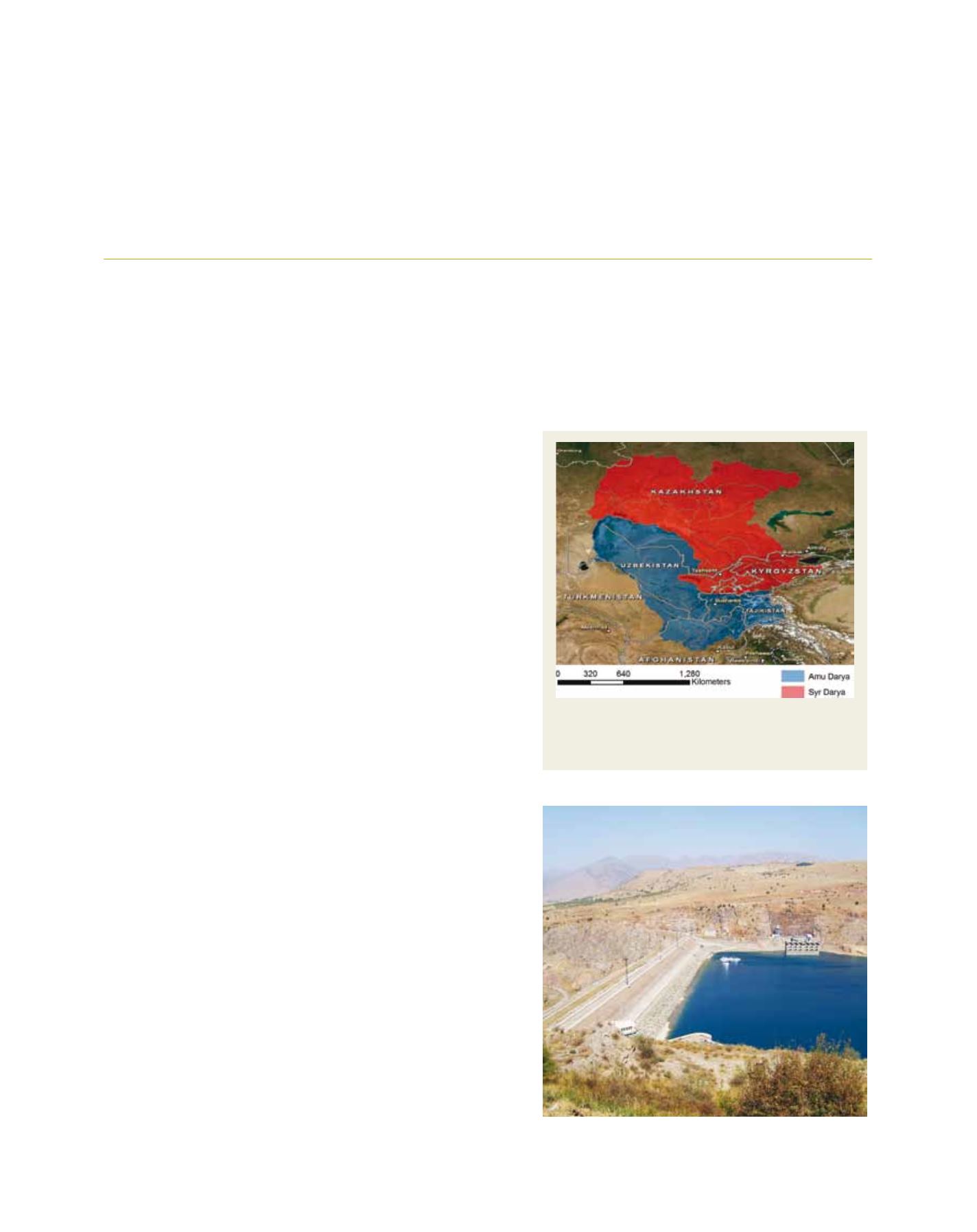

[
] 83
Developing the capacity of Central Asian
national planning agencies to model climate
impact scenarios and develop adaptation strategies
Jaakko Nuottokari, Head of International Consulting, Consulting Services;
Dr Ari Venäläinen Senior Research Scientist, Climate Change;
and Natalia Pimenoff, Research Scientist, Climate Change, Finnish Meteorological Institute
W
ater resources management in the Central Asia
region faces big challenges. The hydrological
regimes of the two major rivers in the region, the
Syr Darya and the Amu Darya, are complex and vulnerable
to climate change. Currently, melt-water from the moun-
tain glaciers supplements the water supply in the rivers.
Unfortunately this extra reserve is predicted to vanish in a
few decades as the small glaciers disappear totally. Water
diversions to agricultural, industrial and domestic users
have reduced flows in downstream regions, resulting in severe
ecological damage. The administrative-institutional system is
fragmented with six independent countries sharing control,
often with contradicting objectives.
A recent project developed and introduced measures to adapt
to changing hydrological regimes. These measures build climate
resilience in target watersheds against anticipated disaster
scenarios, reducing potentially adverse climate impact on
energy supply, food production and environmental sustain-
ability. The impact of the project is on more efficient national
strategies for climate change adaptation, with the outcome of
an improved national capacity to model climate scenarios and
develop adaptation strategies.
Climate information as basis for decision-making
The project developed national capacity in each of the participating
countries to use models to prepare climate change impact scenar-
ios and develop adaptation strategies. This resulted in improved
national strategies for climate change adaptation. It was imple-
mented in close collaboration with the main regional and national
organizations responsible for land and water management.
The project involved the downscaling of Intergovernmental
Panel on Climate Change (IPCC) Fourth Assessment Report
climate models for the Central Asia region, and the use of this data
for hydrological modelling to determine effects to river flows and
resulting water resources available for users. The climate informa-
tion was produced by the Finnish Meteorological Institute (FMI)
and hydrological modelling was done by FutureWater from the
Netherlands. The outcomes were shared in stakeholder workshops
involving key decision-makers from the national governments of
Central Asian countries.
W
ater
Image: Dr Ari Venäläinen, FMI
The Charvak reservoir and power plant in Uzbekistan
The Amu Darya and Syr Darya river basins: hydrological
models for these river basins are used to make simulations
including climate change scenarios
Image: Dr Ari Venäläinen, FMI
















